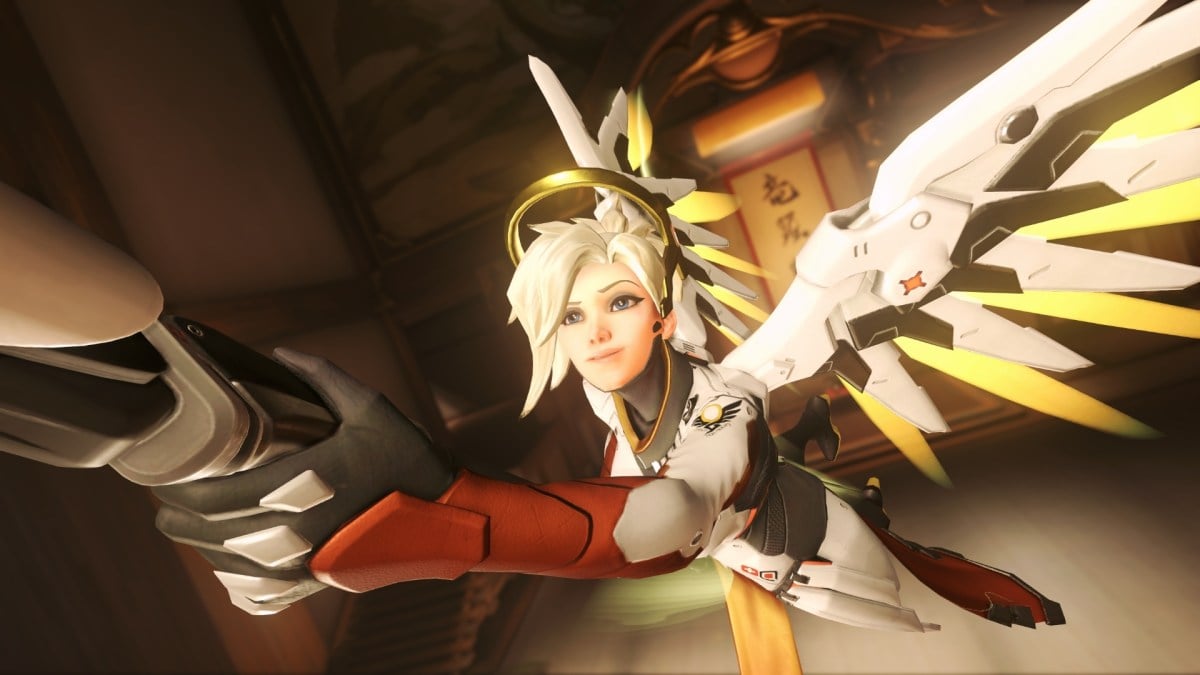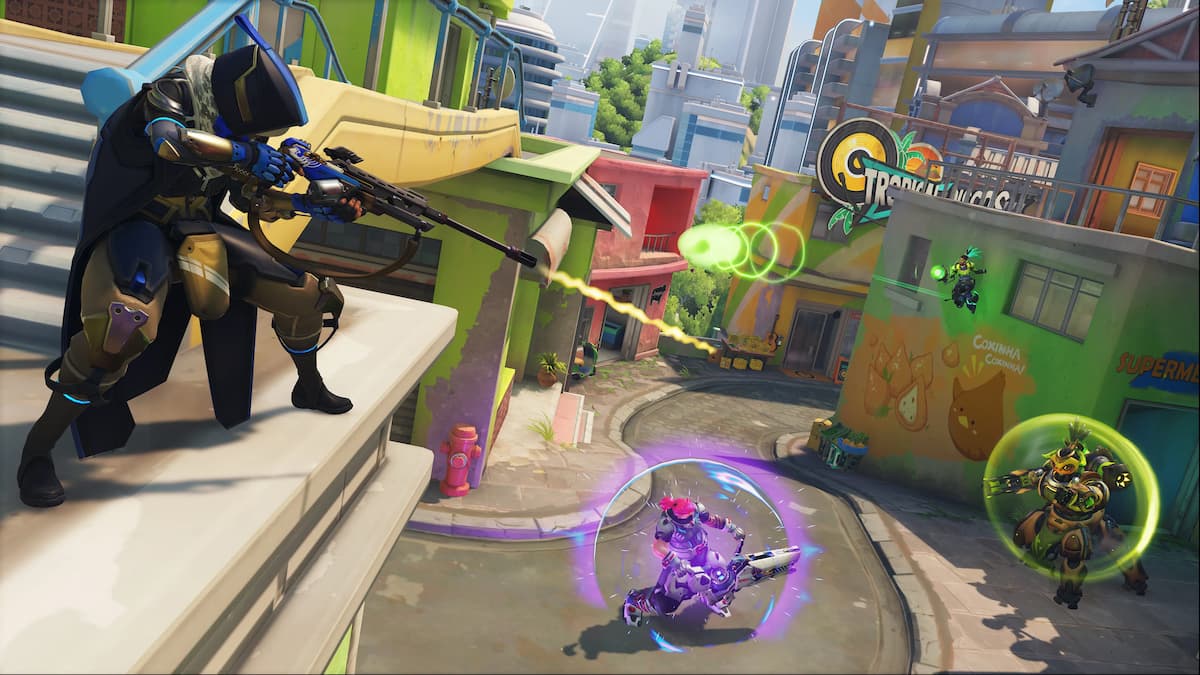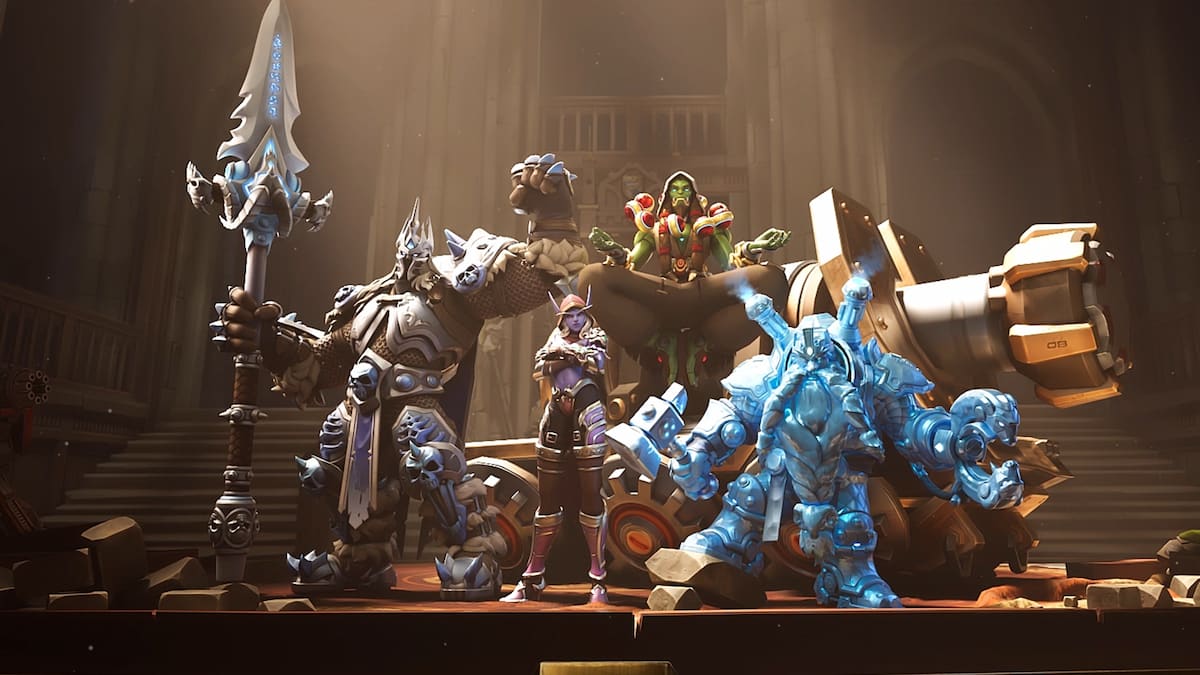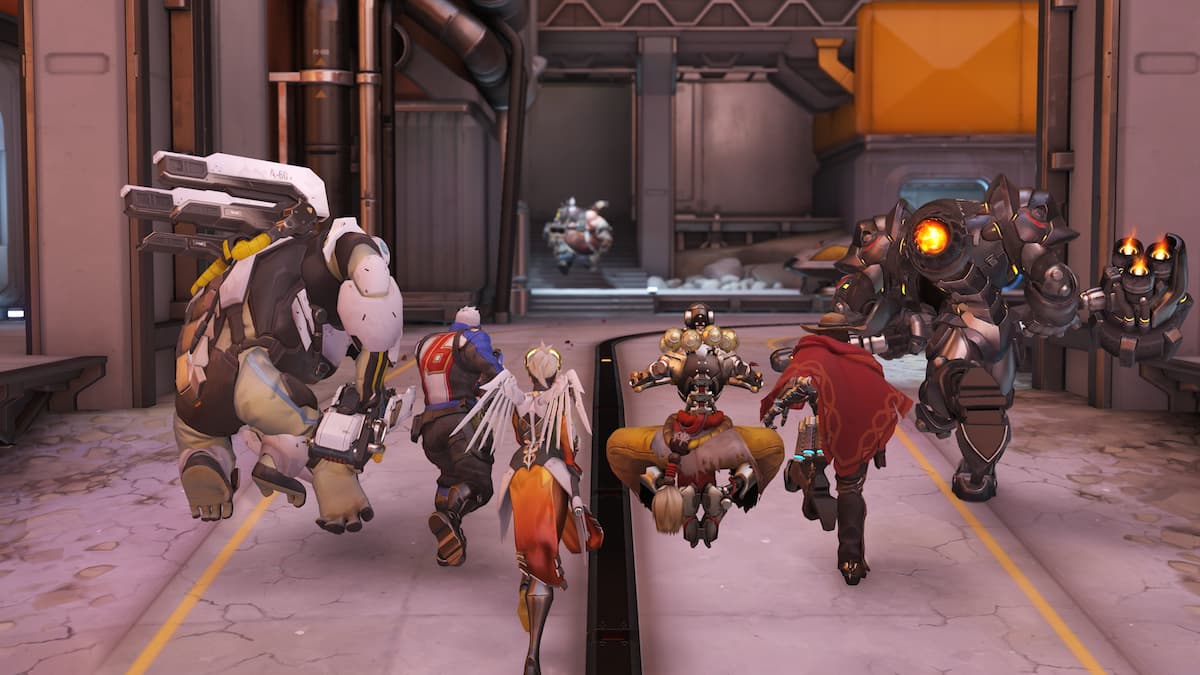Seasoned Overwatch or Overwatch League fans have likely heard the terms “main support” and “off support,” or even “main support” and “flex support” before. These terms are often only used in high levels of organized play, which is why only experienced players or fans of pro leagues may have heard or used them before.
Generally, “main support” refers to heroes that focus on macro levels of play, while “off supports” need to focus on smaller engagements and ability usage.
The term “flex support” has been conflated to mean the same thing as “off support” in some contexts but actually refers to the pre-role-lock era of Overwatch where support players would sometimes flex to other roles in certain compositions. Some former flex support players have become off support players and excelled on heroes like Zenyatta, who can almost function as a damage hero if played in a certain style.
Overwatch has been around for six years, and through all of the game’s changes, including the development of the pro league and the game’s sequel, the definitions of these roles have shuffled in their relevancy. While certain metas required a clear distinction of the players’ roles within the support umbrella, others make this separation feel like a waste of time. Ultimately, in both professional play and ranked play, people will play what works best for them.
Especially moving into the Overwatch 2 era, the lines between main and off support are more blurred than ever, and soon the difference might not matter at all.
Here is the difference between the main and off support roles, and what heroes generally fit into each role.
What heroes are main supports? Which are off supports?
In general, the main supports in Overwatch 2’s hero roster are Lúcio, Mercy, and Brigitte. The off supports are Ana, Zenyatta, Moira, and Baptiste. The game’s newest hero, Kiriko, hasn’t been solidified into the meta yet, so she doesn’t have a distinct classification. Though many players have suspected she will fill the role of off support, with how the meta is going, it might not even be necessary for her to be defined in this way.
What is the role of a main support?
In pro play, main supports usually focus on more macro gameplay elements, like the speed of engagements, what ultimate abilities both their team and the other team have ready, and the positioning of the team as a whole. Because of these elements of the role, the main support player is often the shot-caller or in-game leader of the team.
This isn’t a hard and fast rule, but since the main support role is less mechanically intensive than other roles, this duty often falls on this player.
Lúcio’s main focus as a main support is knowing when to use his speed boost correctly. In Overwatch, Lúcio was the only character with a teamwide speed buff on cooldown, so playing him in rush compositions was essential and pretty effective. Utilizing speed boost the wrong way or rarely using speed is not the most efficient way to play Lúcio. Due to the importance of the speed boost in moving an entire group of teammates and pathing a route for the team, the best Lúcio players are usually extremely aware of their surroundings. This makes them ideal in-game leaders.
Brigitte provides similar AOE healing as Lúcio. A key characteristic of both Brigitte and Lúcio is that while their heals can patch up multiple players at once and are incredibly sustainable, they aren’t fast. Therefore, they can’t heal sudden burst damage well and won’t protect against heroes that can deal a lot of damage at once or an entire team focusing on one target. Brigitte used to provide even more sustainability with her armor packs, but now that the armor has been removed, she provides a good healing output. The most important part of Brigitte’s kit is her passive ability, Inspire. If she deals damage, she generates healing for her team. Using Inspire, an AOE ability, effectively is almost more important than using her packs correctly.
Mercy is also considered a main support, even though she provides fast, individualized healing. The main reason she still plays like a main support is the person playing her must be extremely aware of their surroundings to use her effectively. You need to know which teammate is the best person to damage boost, and when you should target a tank vs. a DPS with healing. Successfully resurrecting also requires a ton of awareness since the ability can easily result in Mercy also dying if done at the wrong time.
To be a good main support player, you need to think about the best way that your utility can help your teammates at all times. Knowing how to counteract the other team and play your team’s heroes cohesively is a key part of being an observant main support player.
It’s also good to note that, on occasion, Baptiste can fill a main support role, though he is highly mechanically intense, which is why he usually is considered an off support. For example, some double-off support compositions, like Baptiste with Zenyatta, see the Baptiste player adapting to filling a main support mentality.
What is the role of an off support?
Off support heroes tend to be the most mechanically advanced heroes, requiring an understanding of how all of their cooldowns work together and being able to multitask with a lot of different things going on at once. They are less focused on the team’s engagements and more on protecting specific teammates and countering certain abilities.
Ana is one of the hardest supports in the game because she requires excellent aim, reflexes, and positioning simultaneously. Saving her sleep dart for the right moment to counter a dragonblading Genji or a shooting B.O.B can make a huge difference for the team. Ana’s anti-heal grenade is also a fight-turning ability best used against opponents or in emergencies to heal multiple teammates at once. Her ultimate is best combined with offensive utility to get max value. She also uses a sniper weapon; although she can’t headshot enemies, she still requires good aim to be effective. All these things make Ana easily fit into an off support role, even though it might seem misleading not to call her a “main” support since she almost always outheals any support she is paired with.
Zenyatta has long been known as the support hero for DPS players. He can be valuable as a third DPS if his harmony and discord orbs are correctly used. His healing orb provides unlimited healing, but he can only place it on one target at a time. His discord orb can be a game-changer for focusing down an enemy and is powerful for quickly eliminating the solo tank in Overwatch 2. The most important part of using discord orb correctly is ensuring that you communicate with your teammates what your discord target is, so everyone can focus on them simultaneously. Players should save Zenyatta’s Transcendence to counteract powerful abilities of the enemy, not to engage in a fight.
Moira is considered an off support because she also has incredible damage potential, especially at long-range. She pairs great with Lúcio in compositions that execute close fights in tight spaces. Moira’s damage output also directly increases her healing output, making doing damage necessary to play her correctly.
Baptiste is a hero that requires a lot of mechanical skill. He can do a lot of damage, but his weapon shoots in an interesting pattern that might take some practice. While his damage bullets are hitscan, his healing bullets are projectile, creating a hero that requires both aiming styles to be efficient. His immortality field is also one of the most powerful single abilities in the game and needs to be saved for the exact right moment because of its long cooldown.
For most off support heroes, you need to become comfortable settling into a rhythm to use them correctly, and it can take some time to get used to. But coming from a support main, once you finally feel like you’ve got the hang of these characters, support suddenly becomes the most dynamic role in the game.
While the meta for a few years has revolved around a main support paired with an off support, things are constantly changing and evolving in professional play, and these roles can become more or less relevant at any time. Kiriko will settle into her role as the meta continues to evolve. The heroes that fall into each loosely-defined category can also change as they get buffs and nerfs, which is part of the charm of playing a game with a new installment and vibrant community flocking back to high levels of play.
Both main support and off support require an awareness only true support classes have, and playing any of the support characters in Overwatch 2 will show you how important this is.






Published: Oct 9, 2022 06:43 pm